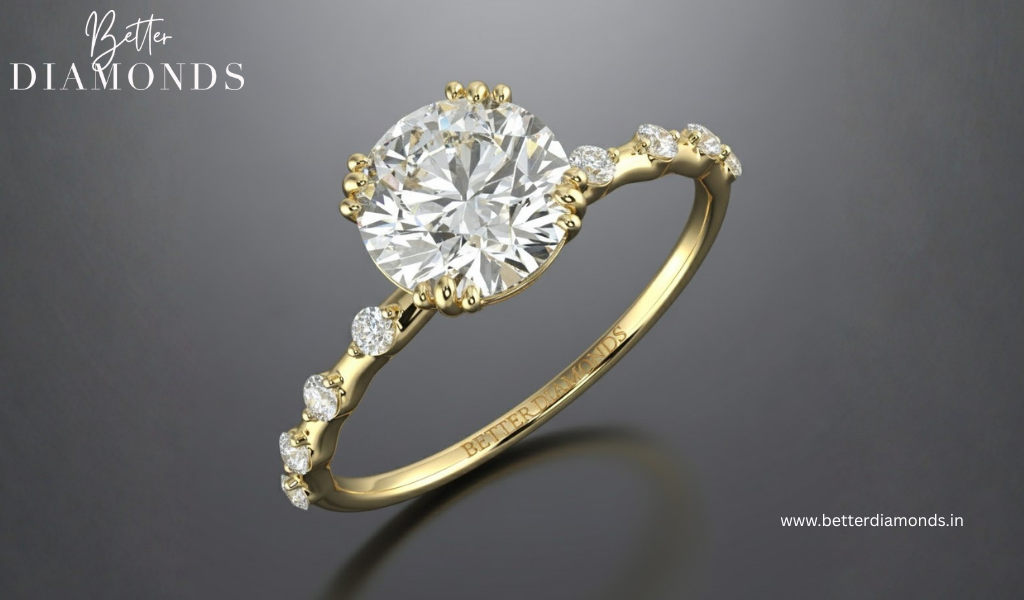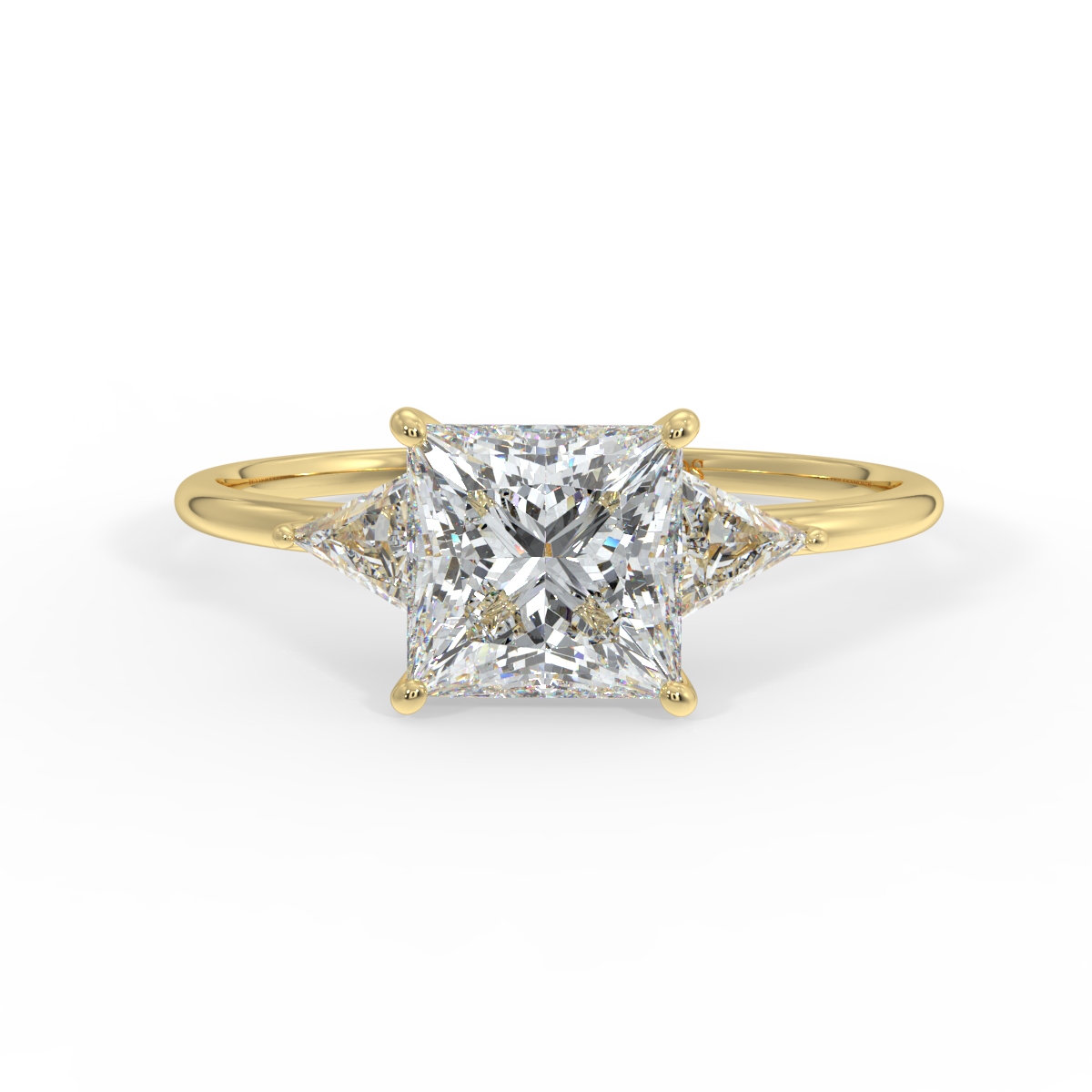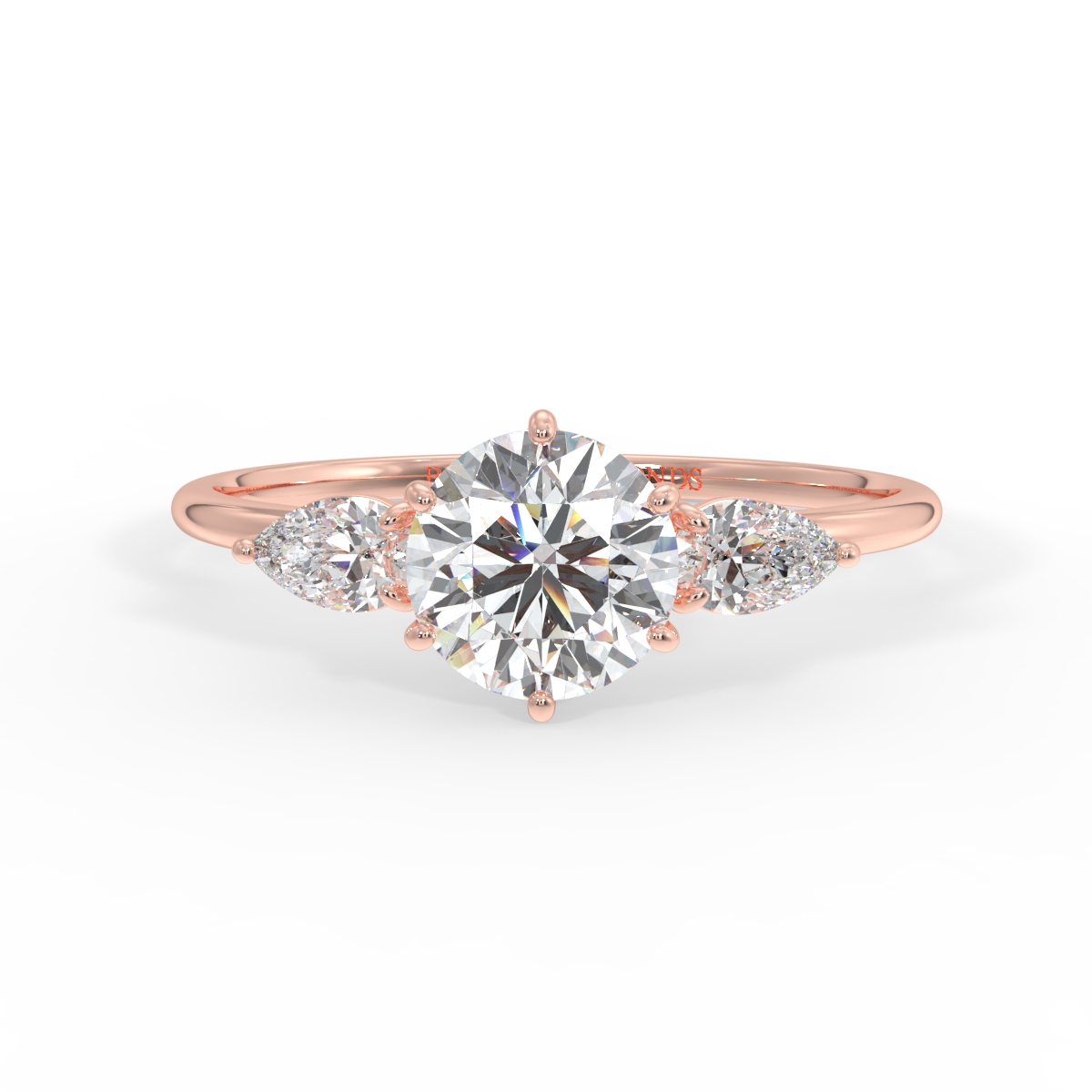Picking out a lab grown diamond engagement ring is one of the most meaningful decisions you will ever make, especially during the festive season of proposals, celebrations, and new beginnings. Lab grown diamonds have become the go-to choice for modern couples that desire ethical, stunningly beautiful, and budget-friendly brilliance.
But in all that ring shopping excitement, it's very easy for critical details to get overlooked that can make a big difference in quality, price, and ultimately in long-term value. To help you make the most confident purchase, here are the most common mistakes to avoid when buying a lab-created diamond engagement ring, along with expert tips to guide you through the process.
1. Not Understanding What Lab Grown Diamonds Truly Are
Many people still seem to confuse lab diamonds with imitation stones, such as cubic zirconia. That is nowhere near the truth.
A lab made diamond engagement ring contains a real diamond, chemically, physically, and optically identical to mined diamonds. The only difference is how they're grown.
One-line hints:
- They offer the same sparkle, durability, and brilliance.
- The value lies in transparency, ethics, and affordability.
Understanding this will help you shop with confidence and explain why lab grown diamonds are the new favourite in the Indian engagement ring market.
2. Certificate of Neglect
A diamond without certification is like buying a car without documents. Certification keeps you safe from low-quality stones and makes sure that you pay for what you are really buying.
One-line hints:
- Look for IGI or GIA certification.
- The certificates verify cut, clarity, colour, and carat.
- Serial numbers on the report must always be cross-checked.
Never purchase a lab created diamond engagement ring without proper certification; it's the biggest long-term safeguard you have.
3. Focusing Only on Carat Weight
That's understandable, but with more affordable lab created diamonds, many are tempted to go bigger. However, size over everything else can really compromise beauty.
One-line pointers:
- Quality of cut affects sparkle more than size.
- A well-cut diamond appears larger and brighter.
- Balance carat with colour, clarity, and cut.
A smaller but well-cut lab grown diamond often outshines a larger, poorly cut stone.
4. Poor Choice of Metal:
The metal used defines the appearance, durability, and price of the ring. So the wrong choice would dull the appearance or decrease the lifespan of the ring.
One-line pointers:
- Choose 14K/18K gold for durability.
- Platinum is more premium but heavier and costlier.
- Match the metal shade to your partner’s style.
The right metal brings out the beauty in your diamond engagement ring, all while making it practical for everyday wear.
5. Forgetting to Check Diamond Cut Quality
'Cut' refers to how well your diamond catches the light. A badly cut stone looks dull, even if it's large and clear.
One-line pointers:
- Choose excellent or ideal cut grades.
- Cut affects sparkle more than clarity.
- Avoid deep or shallow cuts – they leak light.
This one factor alone transforms the brilliance of a ring.
6. Picking the Wrong Ring Style
Engagement rings are an emotional purchase, but buyers often choose what they like instead of what their partner would love.
One-line pointers:
- Notice their jewellery style – minimal/bold.
- Opt for classic designs if you're unsure.
- Comfort matters for everyday wear.
The thoughtful design choice makes the ring feel deeply personal and meaningful.
7. Failure to Set a Realistic Budget
Lab-grown diamonds cost 30-60% less than mined diamonds, but without a budget, you may still feel overwhelmed.
One-line pointers:
- Factor in metal, diamond and design.
- Don't overspend because of festive emotion.
- Value is more important than price.
Budget clarity will help you explore the best options without stress.
8. Lack of After-Sales Services
Many couples forget to check on services such as resizing, cleaning, and repair. These become essential later.
One-line pointers:
- Look for free resizing.
- Ensure lifetime cleaning and polishing.
- Ask about buyback or upgrade options.
Good aftercare will keep your engagement ring looking new for decades.
9. Rushing the Purchase
Festive seasons and proposal plans often create urgency. However, buying a ring isn't something that should be rushed.
One-line clues:
- Research before shortlisting.
- Compare 3–5 stores.
- Try different designs in person.
A thoughtful approach ensures that you choose a ring that your partner will always treasure.
Final Thoughts
Buying a lab grown diamond engagement ring can be a beautiful and stress-free experience when one knows the mistakes to avoid. It is only through the right knowledge, certification, and thoughtful design that one will find a ring which sparkles with meaning to celebrate a love story in the most memorable way. Whether you plan a holiday proposal or give the ring during the festive season, choose wisely, and let your diamond reflect your love—bright, timeless, and true.
FAQs on Lab Grown Diamond Engagement Rings
1. Are lab grown diamond engagement rings real diamonds?
Yes, lab grown diamond engagement rings feature real diamonds with the same sparkle, hardness, and chemical makeup as mined diamonds — only the origin is different.
2. How long does a lab created diamond engagement ring last?
A lab created diamond engagement ring lasts forever. These diamonds are as durable as natural diamonds and perfect for daily wear.
3. Is a lab made diamond engagement ring cheaper than a natural diamond?
Yes, lab made diamond engagement rings are typically 30%–60% more affordable than natural diamonds while offering the same beauty and quality.
4. Can you customise a man made diamond engagement ring in India?
Yes, most jewellers in India offer full customisation options for man made diamond engagement rings, including shape, setting, metal, and size.
5. How do I check the quality of a lab grown diamond engagement ring?
You can check the quality by looking at the 4Cs — cut, colour, clarity, and carat — and ensuring it comes with certification like IGI or GIA.







